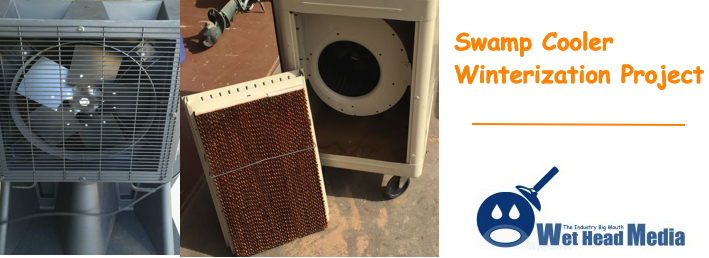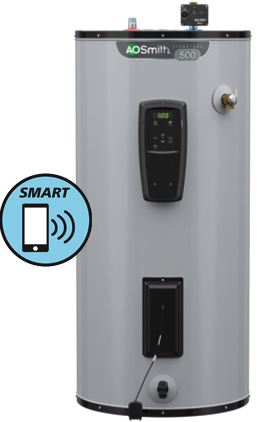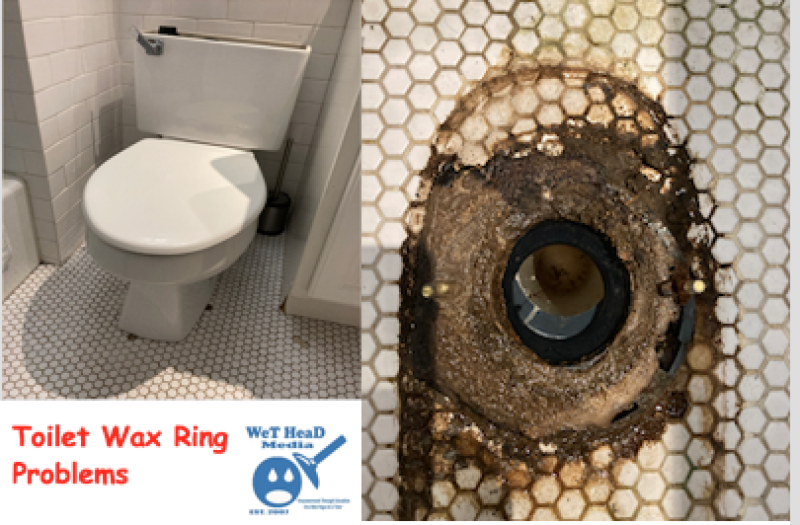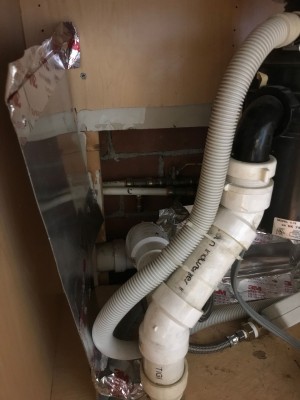6 Tips To Effectively Winterize Your Swamp Cooler
It’s important to winterize your swamp cooler for a variety of reasons – one of which is to save you money on the maintenance. Another reason is that it extends the lifespan of your swamp cooler. Here are five steps to help you winterize your swamp cooler before the winter season is upon you.
1 – Turn off the swamp cooler’s power supply before you start to winterize it. It’s best to either disconnect the device from its power source before commencing work on it.
2 – Switch the regulator supplying the water to the cooler off. Drain the line so that it doesn’t freeze during the winter season. Draining the water can be done by unplugging the line at the swamp cooler as well as the supply valve. You want the water line to be in a sloping position so the water will drain on its own. If you want the water out faster, go to top and blow the line.
3 – Every swamp cooler as drain in its water pan. Empty the water pan out before the cold season and leave it open so that rainwater can escape during this time. After you drain the pan, it’s common to find dirt and mineral sediment in it. Completely wash it out.
 In the summer, the water in the swamp cooler was evaporating, leaving behind all the sediments and minerals behind. A vacuum can be used to eliminate them from the pan. Use a hose to rinse out the cooler pan but make sure the drain is open. This ensures that all of the dirt and sediments is gone from the pan and keep it from rusting in the winter.
In the summer, the water in the swamp cooler was evaporating, leaving behind all the sediments and minerals behind. A vacuum can be used to eliminate them from the pan. Use a hose to rinse out the cooler pan but make sure the drain is open. This ensures that all of the dirt and sediments is gone from the pan and keep it from rusting in the winter.
4 – Make sure that the cooler pads are changed – in the fall season, not spring season – before you winterize your unit. Keep in mind that the pads will have both minerals and dirt in them, building up doing the summer. To keep rusting to a minimum in the winter, have new pads installed in the swamp cooler.
5 – Be sure you have a cooler cover to keep rainwater out so that rust doesn’t occur. This will also keep the outside air from entering the building that uses the swamp cooler. A good deal of homes using home cooler have a damper, which you can open or close. The damper will keep air out of the ducts and getting into the building. If your swamp cooler doesn’t have a damper, you’ll need a cooler cover. And, you’ll also need one if the damper has been ineffective at stopping the air from coming inside.
6- As an additional proactive step, you might want to consider covering the vent panel. It is located side of the cooler where the unit will blow out the airs from inside. But at the same time, it could be the cause of heat loss when the weather changes and cold air can enter through this hole.
The best way would be using the cardboard of the same size, cut out from any appliance cover box, or flat insulation material you can buy from the home repair shops. If you can access the vent cover and open from the inside, then insert the covering materials and then put the cover back on.




If some one wants expert view on the topic of running a blog afterward i suggest him/her to pay a quick visit this blog, Keep up the good work.|
Valuable information. Fortunate me I discovered your site by accident, and
I’m stunned why this coincidence didn’t came about earlier!
I bookmarked it.